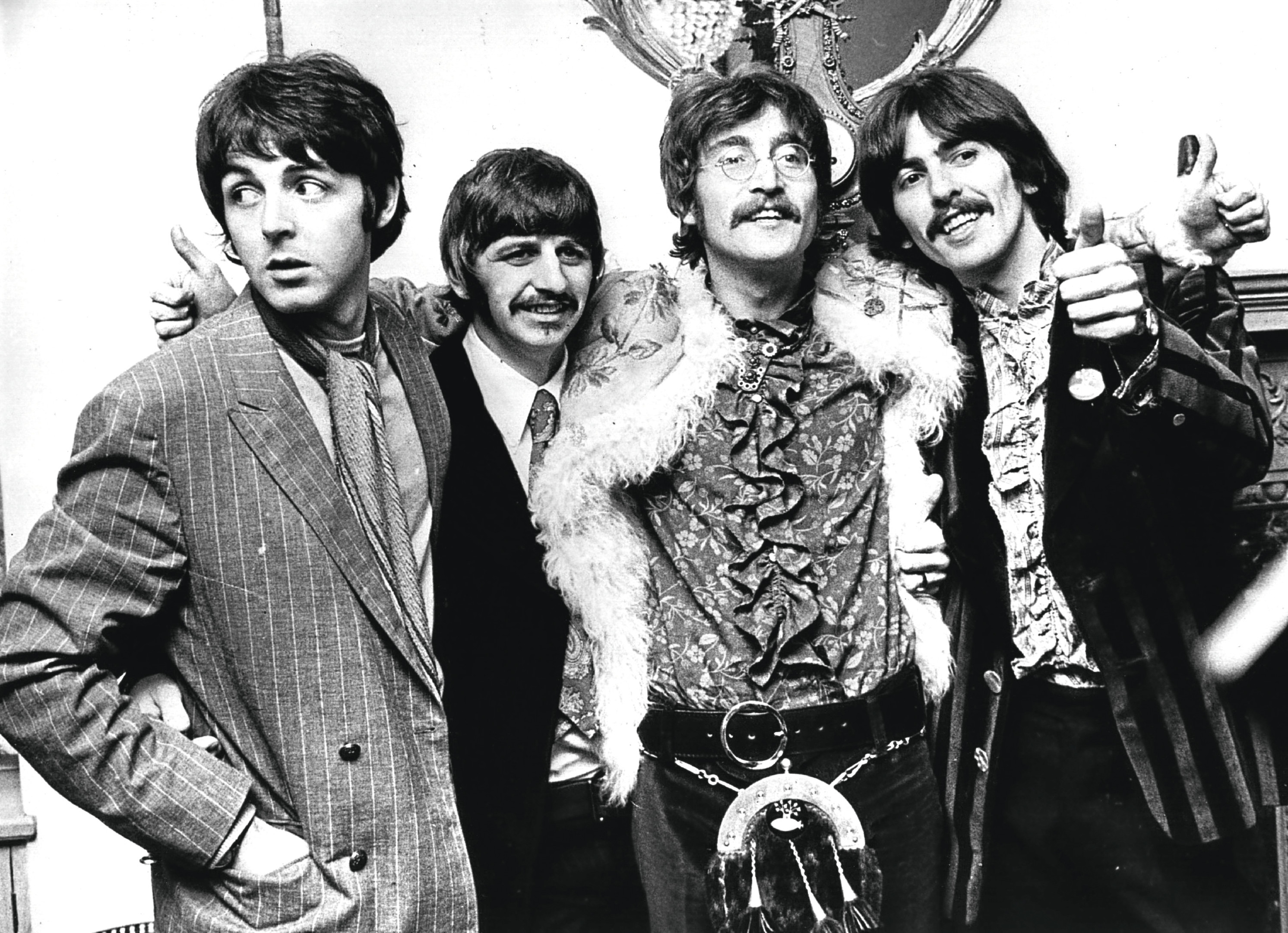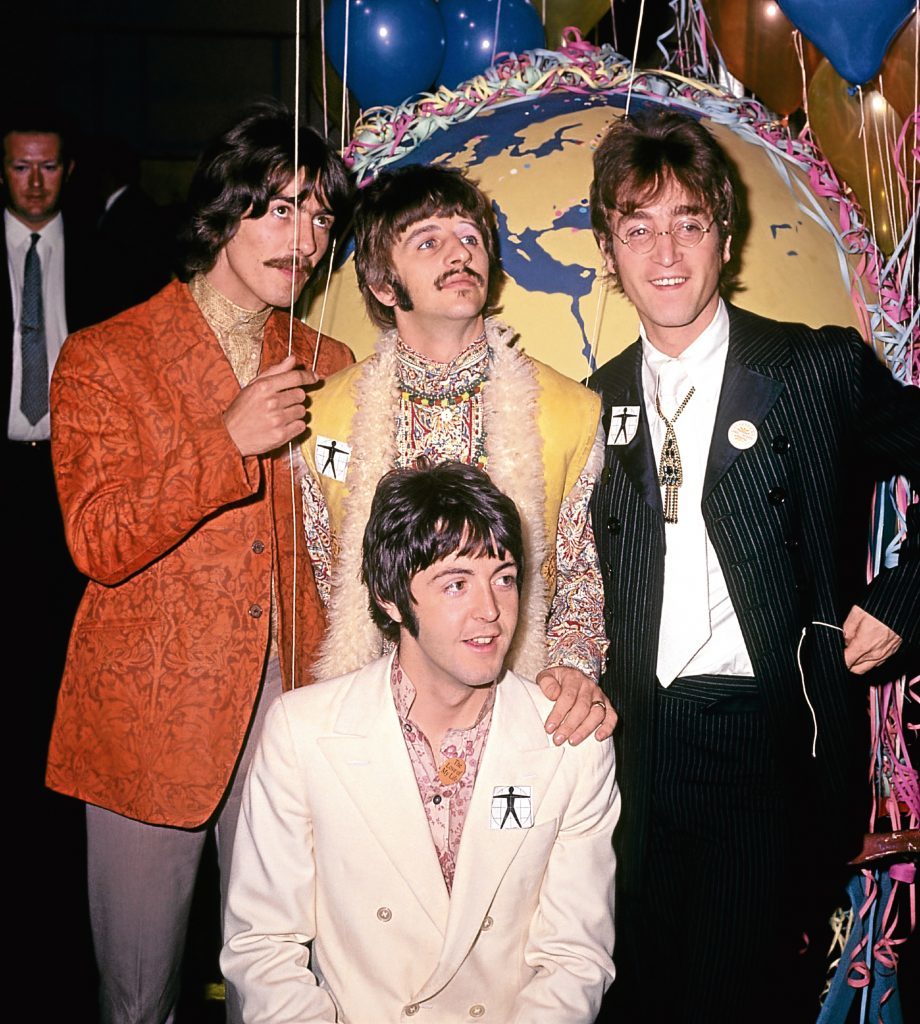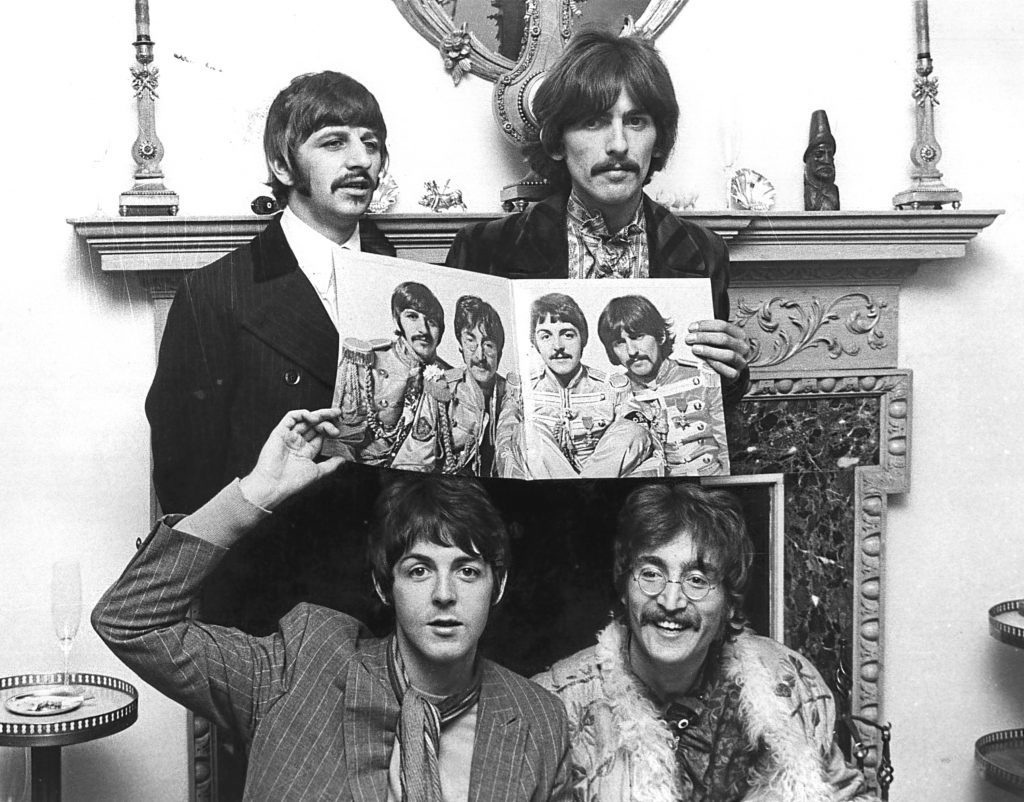
IT’S gone down in history as one of the most innovative and inspirational albums of all time.
And it was 50 years ago this week that The Beatles released Sgt Pepper’s Lonely Hearts Club Band.
In 2012, Rolling Stone magazine recognised it as No 1 of the 500 Greatest Albums Of All Time.
Since the band hit the big time, by 1966, they had grown tired of the uniformity, not to mention touring.
Having barely had a day to themselves during Beatlemania, and given that they couldn’t hear themselves play or sing, you can understand why.
“I had to watch the back of the boys,” revealed drummer Ringo.
“So if they wiggled their shoulders, I’d know: ‘Oh, we’re there. That’s where we are now.’”
Paul had similar issues with the fans shrieking.
“At first, the screaming was exciting,” he admitted. “It’s like doing autographs, having your photo taken, doing all that. Then, after a while, it got more and more boring.”
As a band, though, they still had so much more to give and so many more songs to write.
So how could they get around the issue?
Well, they could release an album under the “guise” of a new band.
On a flight to London after having been on holiday in Kenya, in November, 1966, Paul had an idea for a song that led to the whole concept of Sgt Pepper.
He envisioned a group wearing an Edwardian-era military-band outfit, and had the notion that The Beatles could record an entire album as this other band.
“I thought: ‘Let’s develop alter-egos,’” Paul said.
The title song itself wasn’t one of the first of the album to be written, however, with “Fifth Beatle” producer George Martin revealing that it came about around halfway through.
“It was Paul’s song, just an ordinary rock number,” he said.
“But when we had finished it, Paul said: ‘Why don’t we make the album as though the Pepper band really existed, as though Sergeant Pepper was making the record. We’ll dub in effects.’
“I loved the idea, and from that moment on, it was as though Pepper had a life of its own.”
Recorded over a period of 129 days, the process was long and complicated.
They utilised orchestras, hired musicians and embraced innovative production techniques.
Covering a range of genres and styles, it showcased all of The Beatles’ individual talents, bringing us When I’m Sixty-Four, Being For The Benefit of Mr Kite! and Within You Without You.
It wasn’t just the music that people were to forever remember, however, but also the iconic record cover.
More than 70 famous people appeared on it. In the end, designer Peter Blake arranged the collage of faces with the idea being that they had all turned up to watch The Beatles’ alter-egos Sgt Pepper’s Lonely Hearts Club Band perform.
Fred Astaire, Bob Dylan, Laurel & Hardy and Marilyn Monroe were all there.
The line-up of faces also included Stuart Sutcliffe — a member of a previous incarnation of the band.
The Fab Four also wanted Mae West to appear, but the actress wasn’t happy.
“What would I be doing in a lonely hearts club band?” she asked, miffed.
In reality, though, the concept was that each Beatle had to pick well-known names that they’d like to have come and watch them at their fictional performance.
With that in mind, all four band members wrote to Mae individually, pleading with her to change her mind.
It obviously worked, as she appears on the cover, next to comedian Lenny Bruce and behind writer Aldous Huxley.
Not all of the band’s suggestions were automatically allowed, though, with several of John’s ideas vetoed, having put forward Ghandi, Jesus and Hitler.
Ghandi wasn’t allowed because, according to the head of EMI, they wouldn’t have allowed the record to be printed in India with Ghandi on the cover and they’d lose a huge sales opportunity.
Jesus was a no-go because the artwork was being created just months after the Beatles-are-bigger-than-Jesus scandal.
In an interview with an English journalist, John had claimed people were more interested in The Beatles than they were about their religion.
“Christianity will go,” he said. “It will vanish and shrink . . . we’re more popular than Jesus now.”
A few months later, after the quote was reprinted in an American magazine, the band found themselves in hot water.
US fans had turned up in large numbers to burn their Beatles albums.
As for Hitler, although for many years, people believed that the Nazi leader had been excluded so as not to cause offence, Sir Peter Blake revealed in 2007 that he’s actually there after all, albeit somewhat obscured.
“If you look at photographs of the outtakes, you can see the Hitler image in the studio,” said Sir Peter. “He was, in fact, covered up by the band.”
The album spent 27 weeks at No 1, but two of the band’s most-famous songs which were recorded early on in the process were later cut from the album — Penny Lane and Strawberry Fields.
Had they been left in, the album could have been even better, but Brian Epstein didn’t want them to appear on Sgt Pepper, because they hadn’t made the No 1 spot when they were released in 1967.
When it came to the props used on the front cover, the band’s name had been spelled out in flowers.
Many speculated that this funereal symbol was a sign of the band’s impending demise, but rather it was representative of the fact that they were about to take a new direction.
The Beatles may have been phenomenally successful, but that didn’t stop the BBC from banning airplay of some of the album’s songs, with A Day In The Life deemed inappropriate due to the line “I’d love to turn you on”.
Being For the Benefit of Mr Kite! was banned as it mentioned the lyric Henry the Horse, which contained two slang names for heroin.
Still on the drugs angle, Lucy in the Sky with Diamonds was forbidden because it was believed that its initials stood for LSD — this was allegedly inaccurate, though as the inspiration for the song was a drawing by John’s son Julian of his friend “Lucy, in the sky with diamonds” . . .
There aren’t many people who could get away with playing their music at full volume first thing in the morning, but the Fab Four could.
Before the album was released, they took a copy round to friend Cass Elliot, singer of The Mamas and Papas.
Despite the fact that it was only 6am, the volume was turned right up, the windows were opened.
There wasn’t a single complaint.
When the album was finally released, the sales were very good, with 250,000 copies sold in just the first seven days.
That figure had reached 2.5 million in three months, and now it’s standing at more than 32 million.
With a new anniversary edition released to celebrate the landmark occasion, the way has been paved for even more sales.
And don’t let the fact you may already have a copy put you off.
This anniversary edition has been remixed by Giles Martin, son of The Beatles’ former producer George, and Sam Okell.
It also contains notes from Paul and Ringo and an incredible 34 previously-unheard recordings.
It may be 2017, but there’s plenty of life in Sgt Pepper yet.

Enjoy the convenience of having The Sunday Post delivered as a digital ePaper straight to your smartphone, tablet or computer.
Subscribe for only £5.49 a month and enjoy all the benefits of the printed paper as a digital replica.
Subscribe
